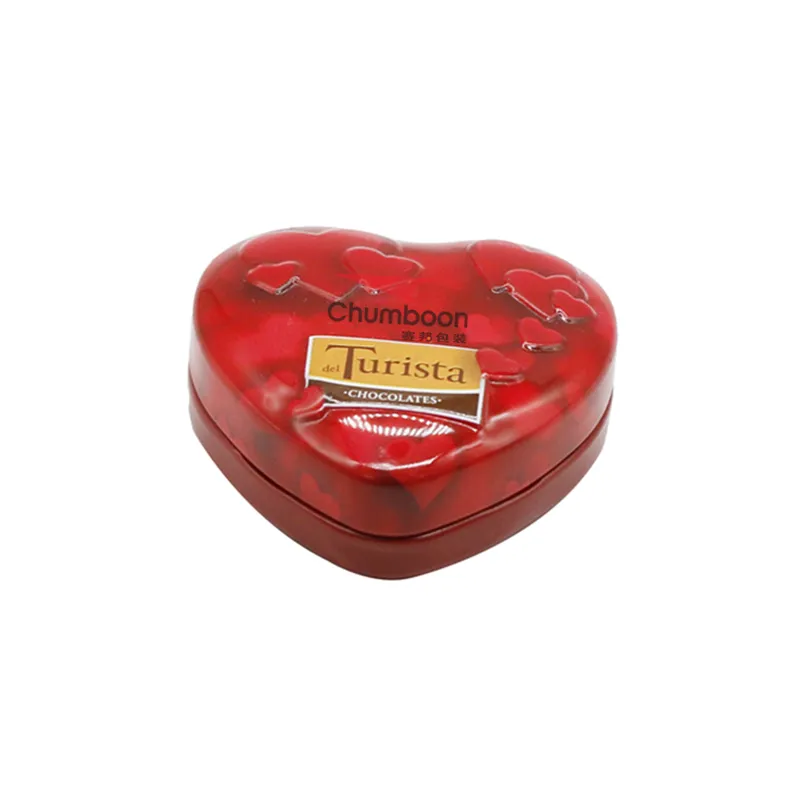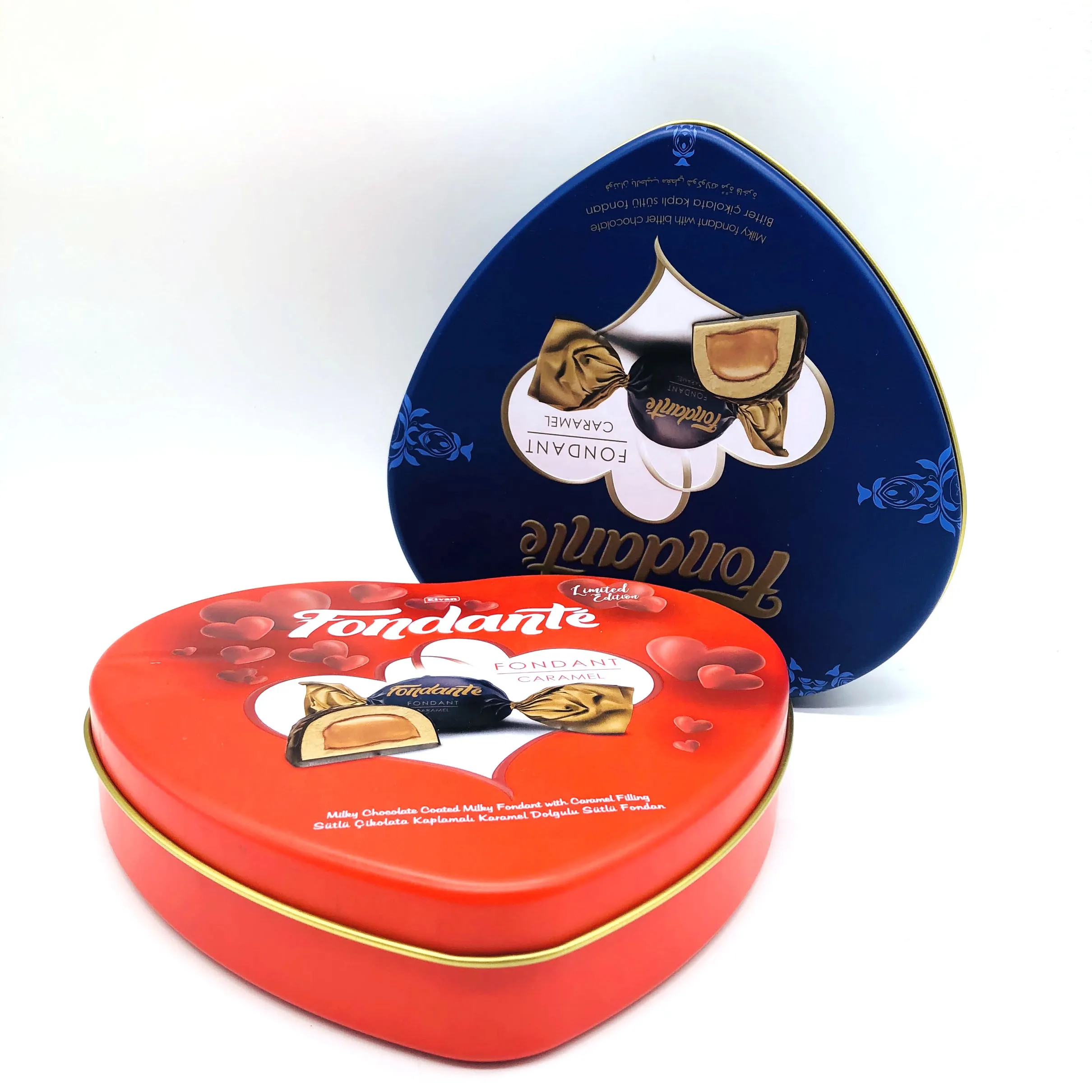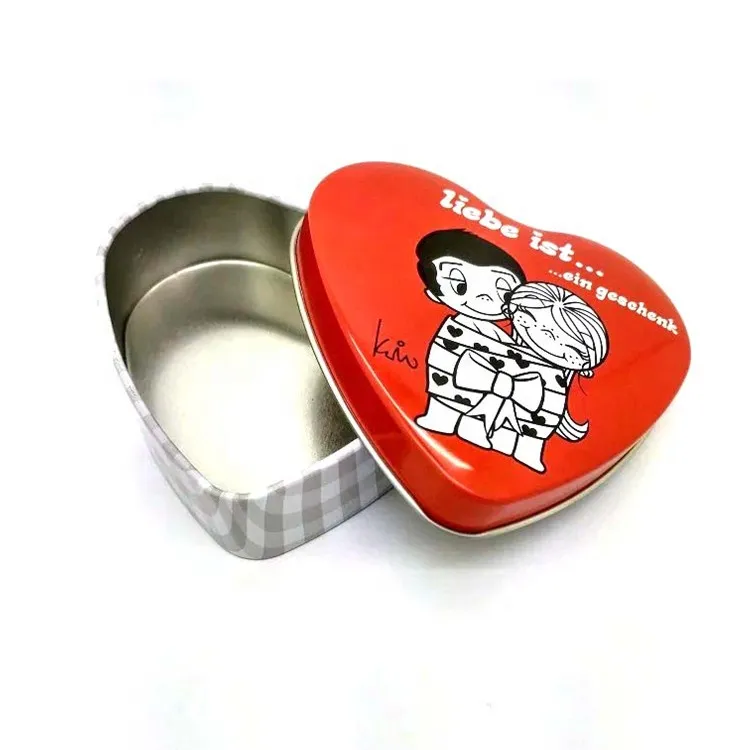As a classic packaging form, candy tin can not only plays an important role in food packaging, but is also widely loved by consumers for its beauty and practicality. The materials used to make candy tin cans directly affect its function, user experience, and protection of candy.
So, what are candy tin cans made of? This article will discuss in detail the main materials and characteristics of candy tin cans, and analyze the role of these materials in protecting the quality of candy.

Main materials used to make candy tin cans
The materials used to make candy tin cans vary, but the most common ones are the following: tinplate, plastic, glass, aluminum alloy, and paper materials. These materials have their own advantages and disadvantages and are suitable for candy packaging of different types and needs.
1. Tinplate
Tinplate, also known as tin-plated iron, is one of the most common materials used to make candy tin cans. Tinplate is a layer of tin plated on the surface of an iron plate to enhance its corrosion resistance. Tinplate candy tin can has the following characteristics:
● Strong anti-corrosion performance: The tin coating can effectively prevent the iron plate from contacting with oxygen and moisture in the air, thereby preventing rust and corrosion.
● Good sealing performance: Tinplate candy tin can has excellent sealing performance through strict crimping process or welding process, which can effectively isolate air and moisture and keep the candy fresh.
● High mechanical strength: Tinplate has high mechanical strength and can withstand external pressure and impact to protect candy from damage.
● Exquisite appearance: The surface of tinplate is easy to print and paint, and can be decorated in a variety of ways to enhance the beauty of candy tin can.
2. Plastic
Plastic candy tin can is also a common packaging form, especially widely used in the modern packaging industry. Commonly used plastic materials include PET, PP, PE, etc. Plastic candy tin can has the following characteristics:
● Light weight: Plastic candy tin can is lighter than other materials and is easy to carry and transport.
● Low cost: Plastic materials have low cost, simple production process, and are suitable for large-scale production.
● High transparency: Transparent plastic materials such as PET allow consumers to directly see the candy in the can, increasing their desire to buy.
● Strong durability: Plastic candy tin cans have strong drop resistance and durability, and are not easy to break.
3. Glass
Glass candy tin can is a more high-end packaging form, often used for high-end candy packaging. Glass candy tin can has the following characteristics:
● Good chemical stability: Glass materials are chemically stable and do not react with candy, ensuring food safety.
● Transparent and beautiful: Glass candy tin can has high transparency, which can clearly show the color and shape of candy and enhance the attractiveness of the product.
● High-end texture: Glass candy tin can has a high-end texture and is suitable for gift candy packaging to increase the added value of the product.
● Fragile: Glass candy tin can is relatively heavy and fragile, and needs to be carefully handled and stored.
4. Aluminum alloy
Aluminum alloy candy tin can has gradually become popular in recent years, especially in environmentally friendly packaging. Aluminum alloy candy tin can has the following characteristics:
● Good anti-corrosion performance: Aluminum alloy material has good anti-corrosion performance and is not easy to rust.
● Light weight: Aluminum alloy candy tin can is lighter than glass jars, easy to carry and transport.
● Strong recyclability: Aluminum alloy material can be recycled repeatedly, meeting environmental protection requirements.
● High mechanical strength: Aluminum alloy has high mechanical strength and can effectively protect candy.
5. Paper material
Paper candy tin can is an environmentally friendly packaging, often used for gift candy packaging. Paper candy tin can has the following characteristics:
● Environmentally friendly and degradable: Paper material is degradable and will not pollute the environment.
● Light weight: Paper candy tin can is light, easy to carry and transport.
● Diverse designs: Paper candy tin can can be printed and designed in a variety of ways to enhance the beauty of the product.
● Poor moisture resistance: Paper material has poor moisture resistance and usually requires a moisture-proof lining.

Comparison of the advantages and disadvantages of candy tin cans made of different materials
When choosing candy tin cans, the advantages and disadvantages of different materials directly affect the storage and transportation of candy. The following is a comparison of the advantages and disadvantages of candy tin cans made of several common materials:
Tinplate candy tin can
● Advantages: strong corrosion resistance, good sealing, high mechanical strength, and exquisite appearance.
● Disadvantages: heavy weight and high cost.
Plastic candy tin can
● Advantages: light weight, low cost, high transparency, and strong durability.
● Disadvantages: poor heat resistance and may have a plastic taste.
Glass candy tin can
● Advantages: good chemical stability, transparent and beautiful, high-end texture.
● Disadvantages: heavy weight and easy to break.
Aluminum alloy candy tin can
● Advantages: good corrosion resistance, light weight, strong recyclability, and high mechanical strength.
● Disadvantages: high cost and may have a metallic taste.
Paper candy tin can
● Advantages: environmentally friendly and degradable, light weight, and diverse designs.
● Disadvantages: poor moisture resistance and low mechanical strength.

Effect of candy tin can materials on candy quality
The effects of candy tin cans made of different materials on candy quality are mainly reflected in the following aspects:
1. Moisture resistance
Candy easily absorbs moisture, causing the sugar coating to melt and deform, affecting the taste. Tinplate, plastic, glass and aluminum alloy candy tin cans all have good moisture resistance and can effectively isolate moisture. However, paper candy tin cans have poor moisture resistance and usually require moisture-proof lining.
2. Anti-oxidation performance
Candy is easily oxidized when exposed to air for a long time, resulting in a poor taste. Tinplate, glass and aluminum alloy candy tin cans have good sealing performance, which can effectively isolate air and prevent candy from oxidizing. The sealing performance of plastic candy tin cans is slightly inferior, but it can also play a certain anti-oxidation role.
3. Physical protection
Candy is easily compressed and collided during transportation and storage, resulting in breakage or deformation. Tinplate, glass and aluminum alloy candy tin cans have high mechanical strength and can provide good physical protection. Plastic candy tin cans are resistant to falling, but their mechanical strength is slightly inferior. Paper candy tin cans have low mechanical strength and poor protection.
4. Chemical stability
The material of the candy tin can must have good chemical stability and cannot react with candy. Glass and aluminum alloy candy tin cans have the best chemical stability, and tinplate and plastic candy tin cans also have good chemical stability, but it should be noted that plastics may have odors. Paper candy tin cans require lining, so the chemical stability depends on the lining material.

